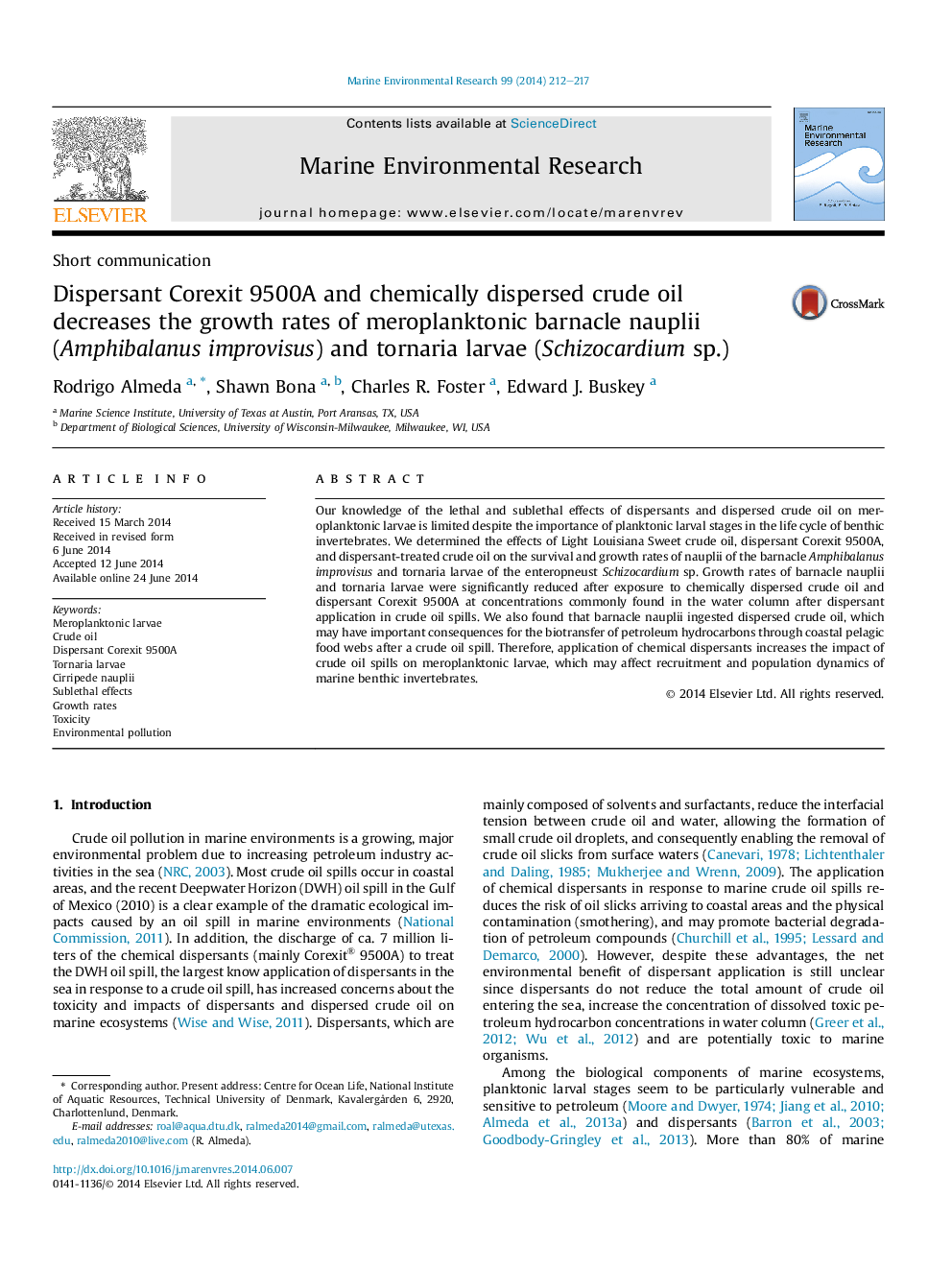| Article ID | Journal | Published Year | Pages | File Type |
|---|---|---|---|---|
| 6387832 | Marine Environmental Research | 2014 | 6 Pages |
â¢Dispersant Corexit 9500A negatively affects growth rates of meroplanktonic larvae.â¢Chemically dispersed oil is more toxic than crude oil alone to meroplanktonic larvae.â¢Barnacle nauplii ingest dispersed crude oil droplets.
Our knowledge of the lethal and sublethal effects of dispersants and dispersed crude oil on meroplanktonic larvae is limited despite the importance of planktonic larval stages in the life cycle of benthic invertebrates. We determined the effects of Light Louisiana Sweet crude oil, dispersant Corexit 9500A, and dispersant-treated crude oil on the survival and growth rates of nauplii of the barnacle Amphibalanus improvisus and tornaria larvae of the enteropneust Schizocardium sp. Growth rates of barnacle nauplii and tornaria larvae were significantly reduced after exposure to chemically dispersed crude oil and dispersant Corexit 9500A at concentrations commonly found in the water column after dispersant application in crude oil spills. We also found that barnacle nauplii ingested dispersed crude oil, which may have important consequences for the biotransfer of petroleum hydrocarbons through coastal pelagic food webs after a crude oil spill. Therefore, application of chemical dispersants increases the impact of crude oil spills on meroplanktonic larvae, which may affect recruitment and population dynamics of marine benthic invertebrates.
